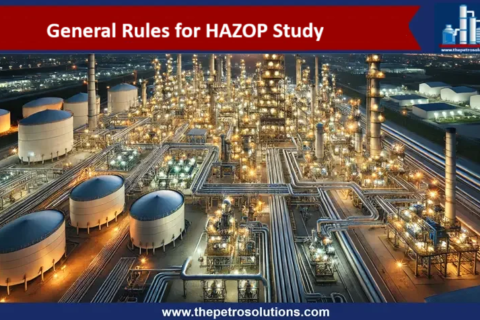Sulfur is the most common impurity present in the feed of the naphtha reforming unit. The maximum allowable concentration is nearly 0.5 weight ppm expressed as S. Sulfur is poison for the hydrogenation and dehydrogenation functionality of the reforming catalysts. Sulfur causes temporary deactivation of the reforming catalyst. The ultimate degree of catalyst poisoning is dependent on the duration of catalyst contact and the concentration of sulfur in the naphtha feeds.
Sulfur poisoning is caused by H2S, either contained in the unit feed or resulting from the decomposition of sulfur compounds contained in the feed. H2S reacts with platinum and consequently, it reduces the activity of the catalyst by decreasing the number of active metallic sites available to catalyze reactions as PtS is inactive for promoting dehydrogenation. The equilibrium reaction of H2S with Pt catalyst is as follows;

It is important to note that a small quantity of sulfur (0.3~0.6 ppm) is added by dosing DMDS (Dimethyl Disulfide) in the reforming feed naphtha to avoid metal carburization or metal-catalyzed coking in the high-temperature equipment mainly heaters tubes. Feed sulfur addition provides metal surface passivation of and protection of the heater tubes. Metal surface passivation aids in minimizing the rate of metal carburization and tube damage.
Effects of Sulfur Poison
The first significant effect of sulfur is instantaneous and that is the loss of catalytic activity, especially of the dehydrogenation/hydrogenation or metal functionality contributions. In general, acid-catalyzed reactions (Hydrocracking) will increase and metal-catalyzed reactions (Dehydrogenation and Dehydrocyclization) will decrease. Following are some indications and effects of Sulfur poisoning;
- A decrease in hydrogen production due to metal function loss.
- A decrease in recycle gas purity but gas yield increases.
- An increased coking rate due to a drop in Hydrogen purity.
- A reduced temperature drops in the reactors, especially the first reactor where rapid naphthene dehydrogenation occurs.
- Increased in Hydrocracking which will result in higher yield of LPG and lower yields of C5+ products.
- Drop in Octane of reformate product.
- Hydrogen sulfide produced in the reactors reacts with ammonia to produce ammonium bisulfide (NH4HS) in the cooler sections of product separation systems. The deposited ammonium salts cause fouling and corrosion.
Possible Causes of Sulfur Breakthrough
Normally, sulfur removal is achieved by pretreating the naphtha feed in a hydrotreating unit (NHT). Poor operation of the NHT or mechanical issues can result in sulfur breakthrough to the reforming catalyst. Possible causes for this breakthrough include the following:
- Low activity of the hydrotreater catalyst or low hydrogen partial pressure.
- Change in NHT feed quality: higher final boiling point, sulfur or nitrogen content
- Excessive NHT temperature resulting in recombinant sulfur formation i.e., H2S reaction with olefins to produce mercaptans near the reactor outlet.
- A leak in the NHT feed-effluent heat exchanger allows untreated naphtha to bypass the reactor
- Poor operation of the hydrotreater stripper resulting in dissolved H2S and H2O carryover to the reforming unit.
- Overdosing of organic compound DMDS.
Control Actions to Avoid Sulfur Poisoning
Some of the first set of operational adjustments could be made, including;
- Lower the severity of the reforming process by decreasing the reactor WAIT and, if required, reduce charge rates to minimize the rate of catalyst coking. The rise in temperature to compensate for the activity decline will accelerate the coke formation.
- Maximize the recycle gas rate to strip off excess sulfur as hydrogen sulfide and to reduce the coke formation.
- Identify the source of the high sulfur in the reformer feed and correct immediately any identified source.
- During the high sulfur period, slightly increase Chloride dosing in the CCR Regenerator. Chloride will absorb the catalyst during Oxy chlorination and will improve the rate of desorption of sulfur. Normalize the chloride dosing once the sulfur level drops in the PF circuit.
- Increase the catalyst regeneration unit load to improve the sulfur removal rate and will help to burn the due to accelerated coking.
Top References
- Springer Handbook of Petroleum Technology edited by Hsu & Robinson
- Catalytic Naphtha Reforming Process by Soni O. Oyekan
Certified Functional Safety Professional (FSP, TÜV SÜD), Certified HAZOP & PHA Leader, LOPA Practitioner, and Specialist in SIL Verification & Functional Safety Lifecycle, with 18 years of professional experience in Plant Operations and Process Safety across Petroleum Refining and Fertilizer Complexes.
- Nasir Hussainhttps://thepetrosolutions.com/author/admin/
- Nasir Hussainhttps://thepetrosolutions.com/author/admin/
- Nasir Hussainhttps://thepetrosolutions.com/author/admin/
- Nasir Hussainhttps://thepetrosolutions.com/author/admin/






